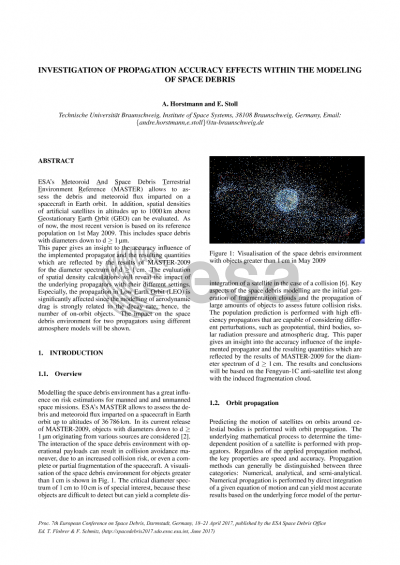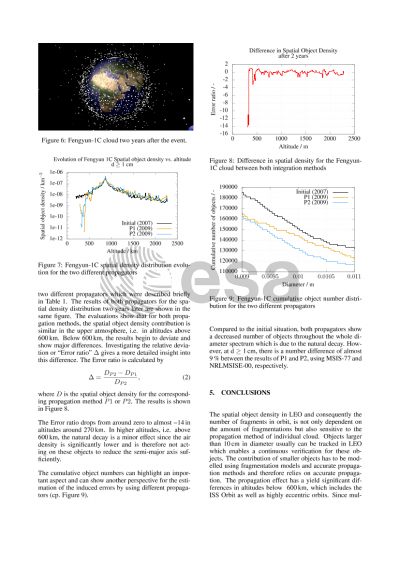Document details

Abstract
ESA's Meteoroid and Space Debris Terrestrial Environment Reference (MASTER) allows to assess the debris and meteoroid flux imparted on a spacecraft in Earth orbit. In addition, spatial density of artificial satellites in altitudes up to 1000 km above GEO can be evaluated. As of now, the most recent version is based on its reference population on May 1st, 2009. This includes space debris with diameters down to 1 ?m. Currently, the implemented sources consist of explosion and collision fragments, launch and mission-related objects, dust and slag from solid rocket motor firings, NaK coolant releases, ejecta from debris impacts, West-Ford needles, paint surface degradation particles from upper stages, and a separate model for the release of multi-layer insulation (MLI) fragments originating from explosions and collisions. The population of cataloged objects is also considered and correlated to the debris population. In addition, meteoroids with a diameter down to 1 ?m are modeled.
The assessment of errors in flux and spatial density derivation which are due to the limited accuracy of the applied semi-analytical propagators shows the sensitivity of the space debris environment on todays orbit prediction algorithms. The TLE catalog provides the space community with a large database of on-orbit objects, especially the Satellite Situation Report gives insight into the number of track-able objects currently in orbit. Since the minimum track-able diameter is at about 10 cm the observable spectrum yields a more deterministic flux calculation approach compared to smaller objects which are due to software modeling and calibrated against indirect measurements. In addition, each considered source which generates objects <10 cm even contributes to the global error spectrum with different magnitudes. The observable diameter spectrum however, has different error origins, e.g. incompleteness of the TLE catalog, delayed detection of space debris, altitude dependent minimum track-able diameters or limited accuracy of the applied propagation algorithm.
This paper gives an insight to the accuracy influence of the implemented propagator and the resulting quantities which are reflected by the results of ESA's MASTER for the observable diameter spectrum. The evaluation of flux and spatial density calculation will reveal the impact of these semi-analytical propagators. Especially the propagation in LEO is significantly affected, since the modeling of aerodynamic drag is strongly related to the decay rate, hence, the number of on-orbit objects. Here, a direct comparison of two progators using different atmosphere models will be shown.
Preview






